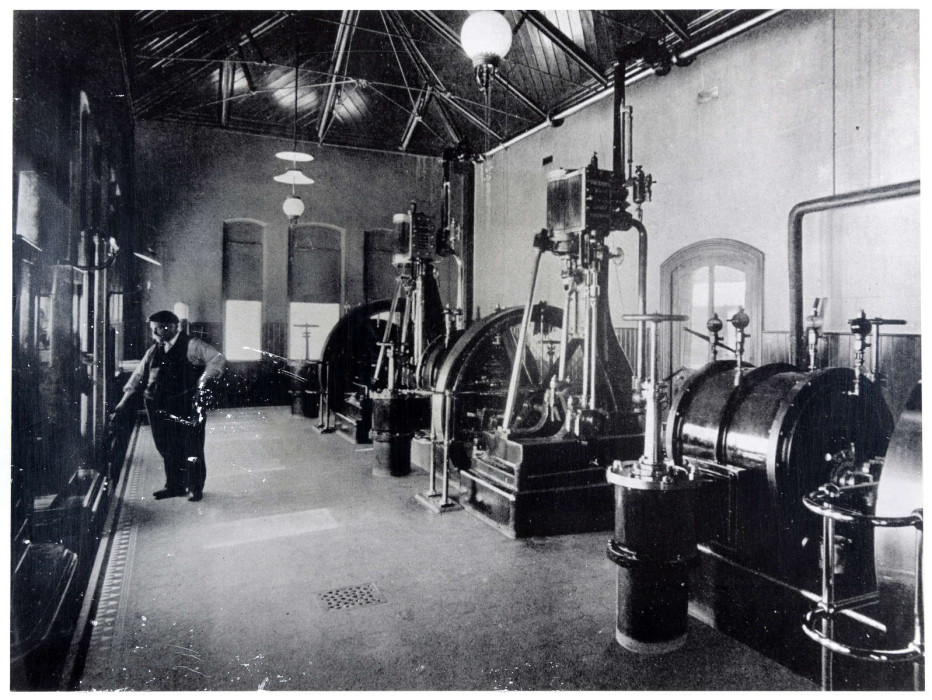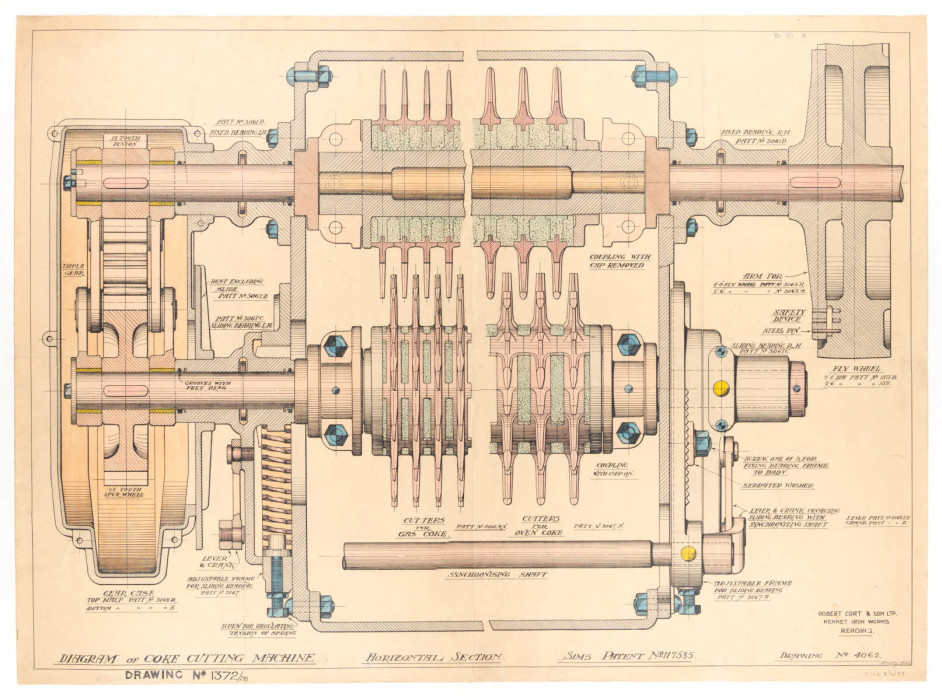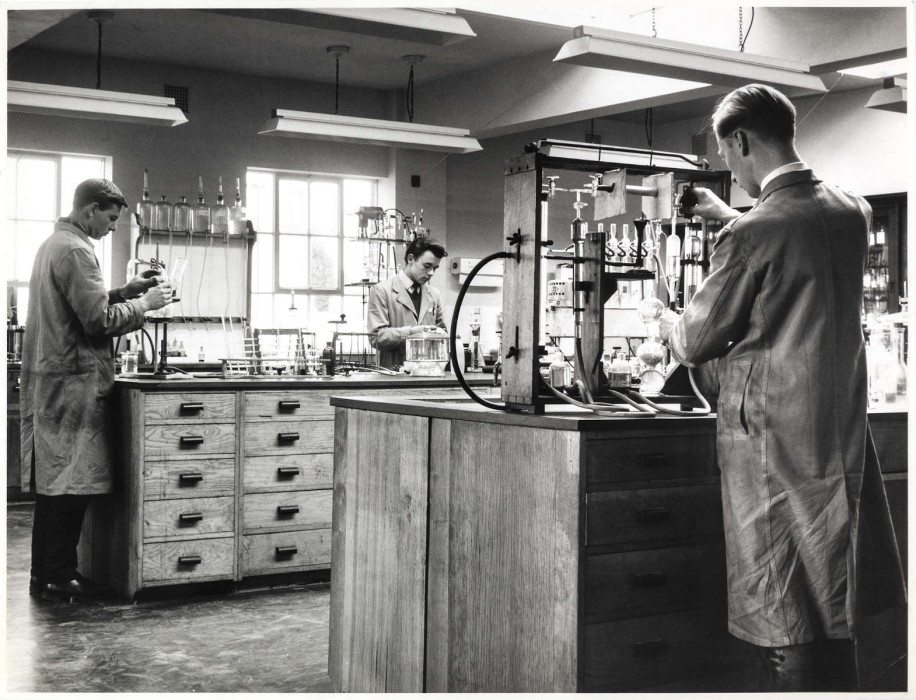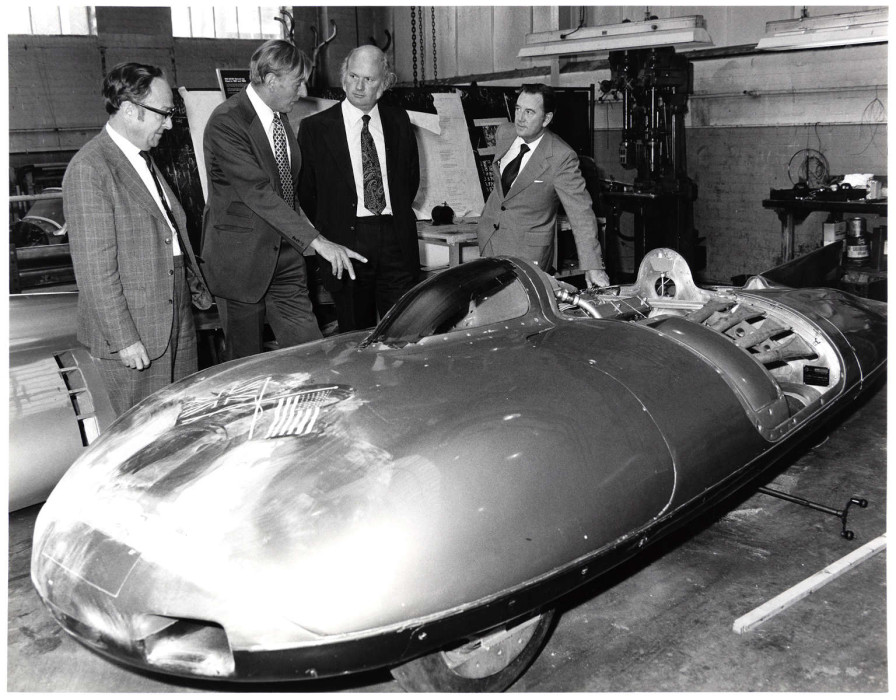Life’s a gas!
As we move into the colder months and think about turning our heating on, we can reveal that we have catalogued the records of Reading Gas Company (D/SG8) and the Berkshire operations of its successor, the Southern Gas Board (D/SG10). Together they cover the period 1724-1984, the oldest document being a deed believed to be the site of Pangbourne Gasworks. The Reading Gaslight Company was established in 1818 when the first gasworks was built on the north bank of the River Kennet in what was soon named Gas Lane, off Bridge Street, Reading. It was initially created to provide gas street lighting for the town, a project which was completed by November 1819.

In 1836 a rival company, the Reading Union Gas Company, erected gasworks off King’s Road, also adjoining the Kennet. The two companies were merged by the Reading Gas Act 1862, under the name of the Reading Gas Company. Initially they continued to operate both sites, but by 1880 had consolidated at the King’s Road site. Additional land, formerly part of the ancient meadow King’s Mead, was purchased in 1880, and between 1880 and 1887 the gasworks were enlarged and Gasworks Road constructed as a means of access. The gas was produced by burning coal, and stored in gasholders before being piped to customers. This process was replaced in the 1970s by natural gas from the North Sea.

The records include around 200 plans of Reading Gas Works which show the buildings and machinery in all their detail – a wonderful resource showing changes in gas making technology, and some of the technical drawings of engines are surprisingly attractive. It was a monumental task listing these as they were all muddled out of order and many are in a very poor state, and we can only use our map table when we're closed to the public. Some of the plans still need conservation work before they can be viewed.
Explosion fears
Other interesting items in the collection include papers relating to objections to the proposal to store gas in Tilehurst just before the Second World War broke out in 1939. A committee of local ratepayers complained of the 'potential danger due to storage of gas under high pressure close to dwelling-houses and a school ... latent in the container itself or capable of development as a result of attacks from the air (not a remote possibility having regard to present activities of the responsible Government Minister)'. One letter compared the proposals unfavourably with the water tower in Tilehurst which 'impresses one with its grace and symmetry and pays tribute to the sympathetic and artistic ideals of those who conceived it', whereas the proposed gas cylinders would be 'tanks ... shamelessly displaying their steely nakedness to the high heavens, and right in line with one of our best views looking from Park Lane across a little valley to the Oxfordshire hills'.
‘Tahiti heat’

The gas industry was nationalised in 1949 under the Gas Act 1948, and Reading Gas Company was taken over by the new State-owned British Gas, specifically by the Southern Gas Board. Interesting material from this period includes notes on a labour dispute involving non-unionised fitters in 1966. Most of the Southern Gas records we hold relate to Reading, but there are also photographs of Abingdon Gasworks, and gas mains and showrooms across Berkshire, plus the pioneering ''Datofonic'' electronic supervising equipment or 'telephone robot' at Newbury Gasholder Station. The Southern Gas Board was the first authority in the country to install such automated monitoring equipment in c.1960. Photographs of displays in Reading Gas Showroom include signs advertising 'high speed gas' (the new natural gas); and the 'Tahiti Heat' promotion, which featured a small aviary of live birds and a 3D figure of a woman in traditional Tahitian costume, which apparently had a recorded promotional message.
Southern Gas helps world records

The Southern Gas records include photographs of a visit by the Deputy Chairman to the MG car factory at Abingdon, which used gas fired ovens to harden the paintwork on their cars. One shows them inspecting the car in which legendary British racing drivers Stirling Moss and Phil Hill set world land speed records in Utah in 1957 and 1958, which was in the factory for an overhaul prior to going on display abroad.
We have also acquired a plan for Wallingford Gas Works, 1930 (D/SG12).
From nursing to football
A random stray in the Southern Gas records consists of photographs of Margaret 'Maggie' Hart, a nurse who worked in Reading and Oxford (D/SG10/8/42). Two of the photographs show her at work in a clinic; the remainder show her off duty - in action as a football referee!
Death of a king
Something of a curiosity is a strip of ‘ticker tape’ received at 10.46am on 6 February 1952 announcing the death of King George VI (D/EX2887). The message came through at a bookmaker’s shop run out of the back of a sweet shop in Maidenhead, which had a ticker tape machine to receive live sports results.
